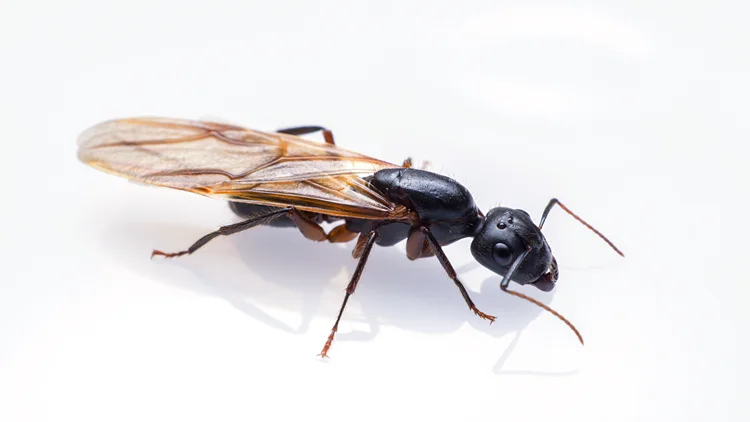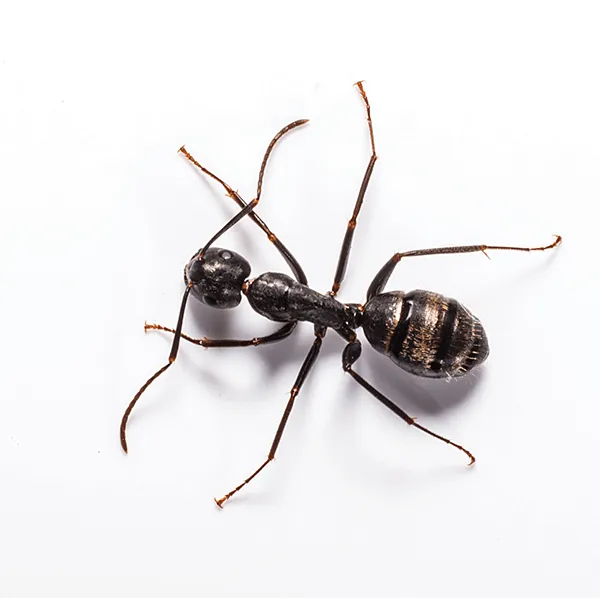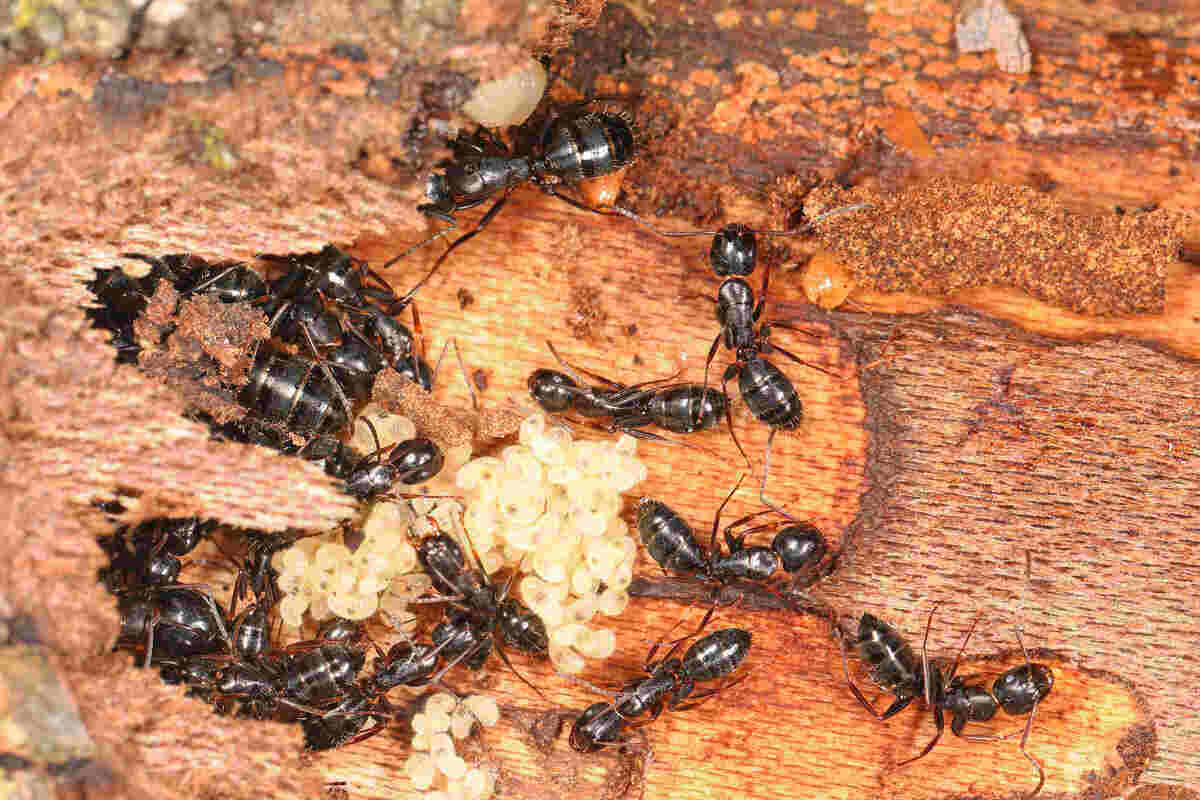
Order: Hymenoptera
Family: Formicidae
Scientific Name: Camponotus pennsylvanicus
Call for a free quote
631-664-7817

Appearance
Carpenter ants are one of the most common wood-destroying pests found in homes and buildings across Long Island, Manhattan, Queens, Brooklyn, and the Bronx. Known for their large size and destructive nesting habits, these ants are often mistaken for termites but have several distinct characteristics.
Adult carpenter ants typically measure between ¼ and ½ inch long, with queens reaching up to ¾ inch. Most species in the New York City area are solid black, though some may appear reddish-black or entirely reddish-brown. They have a smooth, rounded thorax, elbowed antennae, and a clearly defined narrow waist. Winged carpenter ants (called alates) appear in spring and are often confused with termites, but carpenter ants have uneven wings and bent antennae, making them easier to identify.
Common signs of carpenter ants in Long Island and NYC include:
- Large black or red-and-black ants indoors
- Ants crawling near windows, baseboards, or wood structures
- Rustling sounds inside walls
- Frass (wood shavings) near holes or crevices
Where Do They Live?
Carpenter ants prefer to nest in damp, decaying, or water-damaged wood, making homes and buildings across Long Island, Manhattan, Queens, Brooklyn, and the Bronx ideal environments—especially where moisture is present. Unlike termites, carpenter ants don’t eat wood. Instead, they excavate tunnels to build nests, which can weaken structural wood over time.
In the New York City area, carpenter ants are often found nesting in:
- Wall voids, window frames, and door frames
- Behind siding or insulation
- Attics, basements, and crawl spaces
- Wooden decks, porches, and sheds
- Tree stumps, firewood, and fence posts
Outdoors, they typically start colonies in rotting tree trunks, logs, or wood piles, and then move indoors as the colony grows. Once inside, they often remain hidden but can travel long distances in search of food and water, especially at night.
If you hear rustling in the walls or notice large black ants around your property, especially near moisture-prone areas, you may be dealing with a carpenter ant infestation.


Reproduction
Carpenter ants reproduce through a process that begins in late spring or early summer, when mature colonies release winged ants called alates—the reproductive males and females. These ants leave the nest in a nuptial flight, where they mate mid-air. After mating, the males die, and the fertilized females shed their wings to become queens.
A new carpenter ant queen searches for moist or decaying wood to start a nest, often in wall voids, woodpiles, or other damp, wooden structures. She lays her first eggs and cares for them until they hatch into worker ants. These workers take over foraging and nest-building, allowing the queen to focus entirely on laying more eggs.
Over time, the carpenter ant colony grows and can contain thousands of ants. Once the colony reaches maturity—usually after 3 to 5 years—it begins producing new alates, continuing the reproductive cycle and potentially spreading infestations to other areas.
If you notice large black ants indoors, especially near wood or moisture, it could be a sign of an active carpenter ant infestation. Early detection and professional pest control are essential to prevent structural damage.
Get STarted With A Free Consultation
Don’t let pests take over your home. Schedule a consultation with Graduate Pest Control and enjoy a pest-free environment. Our experts are ready to provide you with top-notch service and peace of mind. Act now to safeguard your living space!

Frequently Asked Questions
What types of pests do you treat?
We handle a wide range of pests including ants, bed bugs, cockroaches, termites, rodents, spiders, mosquitoes, wasps, and more. If you’re experiencing an issue with a specific pest, contact us for more details.
Are your pest control treatments safe for children and pets?
Yes, our treatments are carefully designed to be safe for your family and pets. We use environmentally friendly, EPA-approved products and ensure the application is done in a way that minimizes risks.
How long does a pest control treatment take?
The length of a treatment depends on the size of your home or business and the type of infestation. Most treatments take between 30 minutes to 2 hours.
What pest control methods do you use?
We use a variety of methods, including baiting, trapping, insecticide application, and exclusion techniques. Our integrated pest management (IPM) approach ensures we choose the most effective and safe method for your situation.
Do I need to leave my house during the treatment?
In most cases, you do not need to leave your home during treatment. However, we may recommend leaving for a short period during certain intensive treatments like fumigation.
Do you offer eco-friendly or organic pest control options?
Yes, we offer green pest control solutions that are safe for the environment, using natural products to minimize the impact on your surroundings.
Can I schedule services online?
Yes, you can easily book an appointment or request a free inspection through our website’s online booking system.
How can I get a quote for pest control services?
You can get a free, no-obligation quote by calling us, filling out our online form, or scheduling an inspection. We’ll assess your pest issue and provide a detailed plan of action with pricing.
